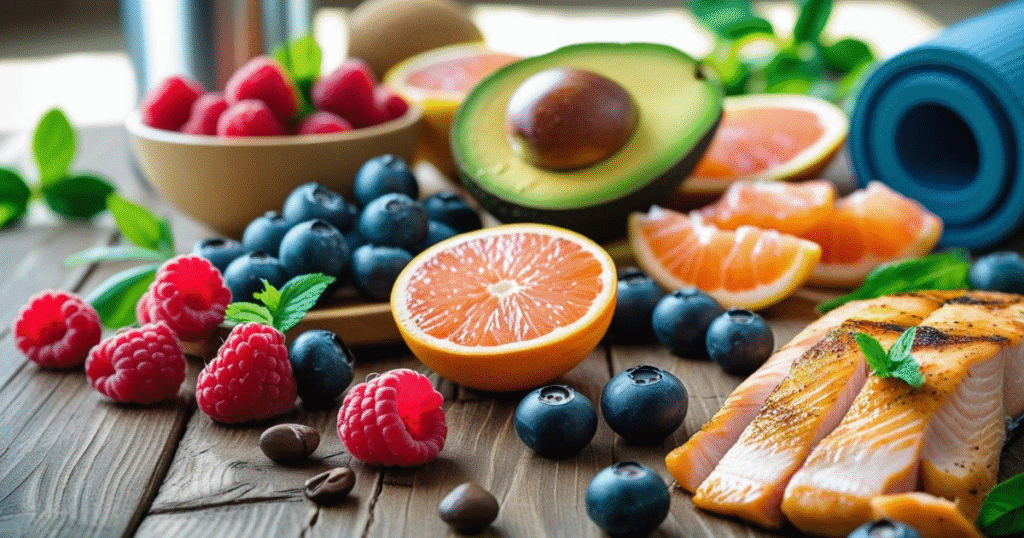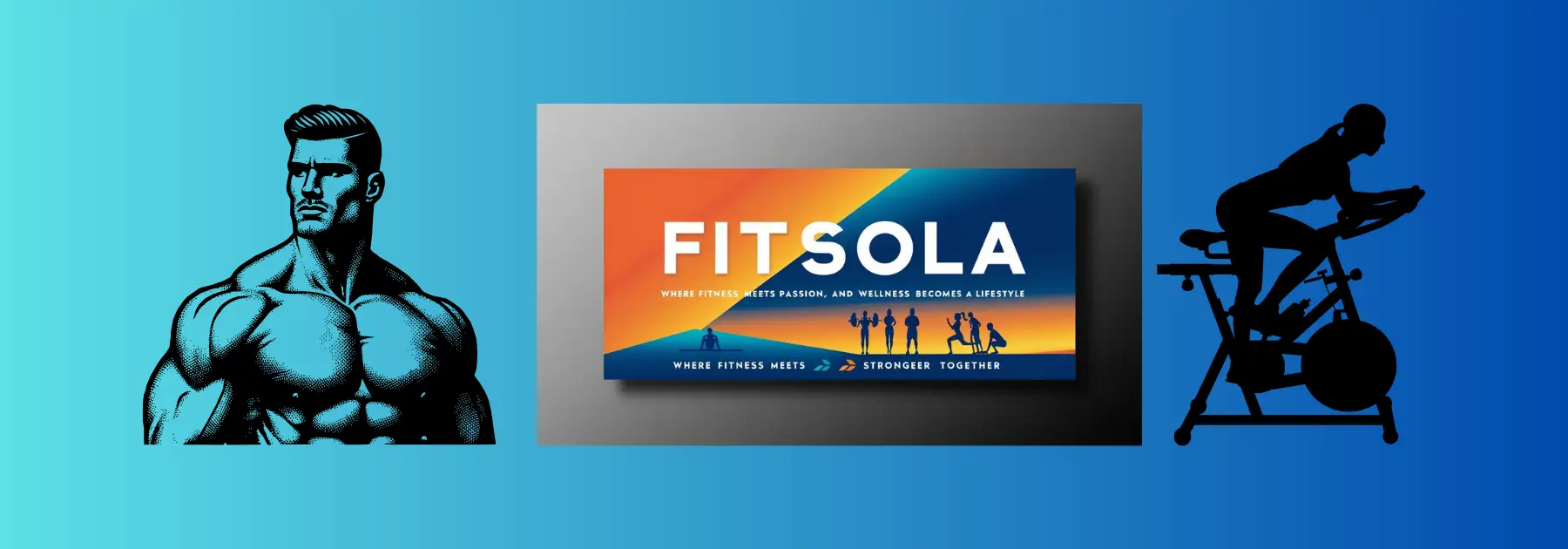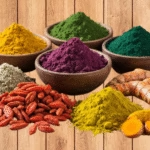You’ve laced up your sneakers, you’re hitting the gym, and you’re pushing your limits. But have you ever stopped to consider the fuel powering your efforts? Understanding the best foods for your body can be the key to unlocking your true potential. For many, the relationship with food becomes a battlefield when fitness goals enter the picture. Do you need to drastically cut calories? Should you avoid carbs? Is there a magic formula for shedding fat and building muscle simultaneously?
The truth is, food isn’t your enemy; it’s your most potent ally on your fitness journey. This article will serve as your comprehensive guide to understanding and implementing the philosophy of “Eat to Lose, Eat to Win.” We’ll delve into how you can strategically nourish your body to not only achieve sustainable fat loss but also fuel incredible workouts, enhance recovery, and ultimately, reach your peak performance.
By the end of this read, you’ll not only grasp the core principles of fitness nutrition but also gain practical strategies and delicious meal ideas to transform your eating habits. And as a special bonus, stick around to the end to download our free “7-Day Fitness-Friendly Meal Plan” to kickstart your success!

The Philosophy Behind “Eat to Lose, Eat to Win”
At its heart, “Eat to Lose, Eat to Win” is a balanced approach to nutrition that recognizes the dual needs of a fitness-focused lifestyle: managing body composition and optimizing physical performance. Let’s break down what each component truly means:
Eat to Lose: This aspect focuses on creating a calorie deficit. To lose weight, particularly body fat, you need to consistently consume fewer calories than your body expends. However, this doesn’t mean starving yourself or depriving your body of essential nutrients. The key is to make smart food choices that are nutrient-dense yet lower in overall calories. This ensures you’re fueling your body with what it needs while gently encouraging it to tap into stored fat for energy.
Eat to Win: This side is all about fueling your body for optimal performance, recovery, and muscle growth. Whether you’re a seasoned athlete or just starting your fitness journey, your body requires the right nutrients at the right times to power through workouts, repair muscle tissue after exercise, and build strength over time. This involves prioritizing specific macronutrients and micronutrients that support energy levels, muscle protein synthesis, and overall bodily functions.
Why Both Matter: Many fall into the trap of focusing solely on one aspect. They might drastically cut calories to lose weight, only to find themselves lacking energy for workouts and potentially losing muscle mass along with fat. Others might focus on “bulking up” by eating excessively, without paying attention to the quality of their food, leading to unwanted fat gain. “Eat to Lose, Eat to Win” emphasizes the symbiotic relationship between these two goals. By strategically managing your calorie intake and prioritizing nutrient-rich foods, you can create an environment where your body efficiently burns fat while simultaneously building and maintaining lean muscle mass, leading to a stronger, healthier, and more capable you.
Step on. Shake it off. Burn fat faster with AXV — your full-body workout, reimagined!
Myth Busting: Let’s address some common misconceptions:
- Myth: Eating less is always better for weight loss. Reality: Severely restricting calories can backfire. It can lead to metabolic slowdown, muscle loss, nutrient deficiencies, and ultimately, make it harder to sustain weight loss in the long run. The focus should be on creating a moderate and sustainable calorie deficit through mindful food choices.
- Myth: “Bulking” means you can eat whatever you want. Reality: While a calorie surplus is necessary for significant muscle gain, filling that surplus with processed foods, excessive saturated fats, and sugary drinks will primarily lead to increased body fat, not lean muscle. “Clean bulking” involves prioritizing nutrient-dense, whole foods to support muscle growth with minimal fat gain.
Understanding the Fitness Nutrition Basics: Best Foods
To effectively implement the “Eat to Lose, Eat to Win” philosophy, it’s crucial to grasp some fundamental principles of nutrition:
Calories & Energy Balance: Calories are the units of energy we get from food. Your body burns calories throughout the day for basic functions (like breathing and digestion) and physical activity. Energy balance is the relationship between the calories you consume and the calories you expend. * Maintenance Calories: The number of calories your body needs to maintain its current weight. This varies based on factors like age, sex, weight, height, and activity level. Online calculators can provide a good starting point for estimating your maintenance calories.
Calorie Deficit (for Fat Loss): To lose weight, you need to consistently consume fewer calories than your maintenance level. A deficit of 500 calories per day is often recommended for a healthy rate of weight loss (around 1-2 pounds per week). Calorie Surplus (for Muscle Gain): To build muscle, you generally need to consume slightly more calories than your maintenance level (a surplus of around 250-500 calories per day is a common guideline).
Macronutrients Overview: These are the three primary nutrients your body needs in large amounts:
- Protein: The building blocks of muscle tissue. Adequate protein intake is crucial for repairing muscle damage after workouts and promoting muscle protein synthesis (the process of building new muscle). Protein also helps you feel fuller for longer, which can be beneficial for managing calorie intake during fat loss. Good sources include lean meats (chicken, fish, turkey), eggs, dairy (Greek yogurt, cottage cheese), legumes (beans, lentils), tofu, and protein powders. Aim for around 0.8-1 gram of protein per pound of body weight, especially if you are actively trying to build muscle.
- Carbohydrates: Your body’s primary source of energy, especially during high-intensity exercise. Carbs are broken down into glucose, which fuels your muscles and brain. Choosing complex carbohydrates (whole grains, fruits, vegetables) over simple, processed carbs (sugary drinks, white bread) provides sustained energy and essential fiber. Timing your carbohydrate intake around your workouts can optimize performance and recovery.
- Fats: Often misunderstood, healthy fats are vital for hormonal health (including the production of testosterone, which plays a role in muscle growth), nutrient absorption (vitamins A, D, E, and K are fat-soluble), and providing sustained energy. Focus on unsaturated fats found in avocados, nuts, seeds, olive oil, and fatty fish (like salmon), while limiting saturated and trans fats.
Micronutrients: These are vitamins and minerals that your body needs in smaller amounts but are essential for various bodily functions, including energy production, immune function, and recovery. A balanced diet rich in fruits, vegetables, and whole grains should provide most of the micronutrients you need. Hydration is also crucial for performance, recovery, and overall health. Drink plenty of water throughout the day.
Your 10-Minute Full-Body Workout Starts Here!
Building a Fitness-Friendly Meal Plan
Creating a meal plan that supports both fat loss and performance requires thoughtful consideration:
Meal Frequency: The optimal number of meals can vary depending on individual preferences and schedules. Some find that eating 3 larger meals per day keeps them satisfied, while others prefer 5-6 smaller meals to maintain stable blood sugar levels and prevent overeating. Experiment to see what works best for you. Consistency in meal timing can also be beneficial.
Portion Control & Plate Method: Understanding appropriate portion sizes is key to managing calorie intake. A simple visual guide is the plate method: * Fill half of your plate with non-starchy vegetables (broccoli, spinach, salad). * Fill one-quarter of your plate with a lean protein source. * Fill the remaining one-quarter with a complex carbohydrate (brown rice, quinoa, sweet potato). * Include a small serving of healthy fats.
Meal Timing for Performance: Strategically timing your meals around your workouts can significantly impact your energy levels and recovery: * Pre-Workout Fueling (30-60 minutes before): Consume a small, easily digestible meal or snack that is higher in carbohydrates for quick energy. Examples include a banana, a small bowl of oatmeal, or a piece of whole-wheat toast with a little jam. * Post-Workout Recovery (within 1-2 hours): Replenish glycogen stores and aid muscle repair by consuming a meal or snack that contains both carbohydrates and protein. Examples include a protein shake with fruit, Greek yogurt with berries and granola, or a small chicken breast with sweet potato.
80/20 Rule: A sustainable approach to nutrition allows for some flexibility. The 80/20 rule suggests that you focus on eating healthy, whole foods 80% of the time, while allowing for occasional indulgences (your favorite treats) 20% of the time. This can help prevent feelings of deprivation and make healthy eating a more enjoyable and sustainable lifestyle.
Fitness-Friendly Meal Examples
Here are some examples of meals tailored for fat loss and performance:
A. Fat Loss Focus (Eat to Lose)
These meals prioritize lean protein, high-fiber vegetables, and moderate amounts of complex carbohydrates to create a calorie deficit while keeping you feeling full and energized.
- Grilled chicken with quinoa & steamed broccoli: A classic combination providing lean protein for satiety, fiber and nutrients from broccoli, and sustained energy from quinoa.
- Egg white omelet with spinach & whole grain toast: Low in calories and high in protein, this meal is a great way to start the day. Adding spinach boosts nutrient intake, and whole grain toast provides some complex carbohydrates.
- Greek yogurt with berries & chia seeds: A convenient and protein-packed option. Berries provide antioxidants and fiber, while chia seeds add healthy fats and more fiber.
B. Performance Focus (Eat to Win)
These meals provide more carbohydrates for energy, along with adequate protein for muscle repair and healthy fats for overall health.
- Brown rice with salmon & asparagus: Salmon is rich in omega-3 fatty acids and protein, brown rice provides sustained energy, and asparagus is a nutrient-dense vegetable.
- Oatmeal with almond butter & banana: A great pre-workout meal. Oatmeal provides complex carbohydrates for energy, almond butter adds healthy fats and protein, and banana offers easily digestible carbs and potassium.
- Sweet potato with lean turkey & roasted vegetables: Sweet potatoes are a good source of complex carbohydrates and vitamin A, lean turkey provides protein, and roasted vegetables add essential vitamins and minerals.
Recipes for Success
Here are a few simple and delicious recipes to incorporate into your fitness-friendly meal plan:
Recipe 1: Power Breakfast – Protein-Packed Smoothie Bowl
- Ingredients:
- 1 scoop (approx. 25g) protein powder (whey, casein, or plant-based)
- 1/2 cup unsweetened almond milk (or other milk)
- 1/2 frozen banana
- 1/4 cup frozen berries (mixed)
- 1 tablespoon chia seeds
- Optional toppings: granola, nuts, shredded coconut
- Instructions:
- Combine protein powder, almond milk, frozen banana, frozen berries, and chia seeds in a blender.
- Blend until smooth and creamy. Add more liquid if needed to reach desired consistency.
- Pour into a bowl and top with your favorite toppings.
- Nutritional Info (approximate): Calories: 300-350, Protein: 30-35g, Carbs: 30-40g, Fat: 8-12g (depending on protein powder and toppings)
Recipe 2: Midday Fuel – Chickpea Quinoa Salad
- Ingredients:
- 1/2 cup cooked quinoa
- 1/2 cup canned chickpeas, rinsed and drained
- 1/4 cup chopped cucumber
- 1/4 cup chopped bell pepper (any color)
- 2 tablespoons crumbled feta cheese (optional)
- 1 tablespoon olive oil
- 1 tablespoon lemon juice
- Salt and pepper to taste
- Instructions:
- In a medium bowl, combine cooked quinoa, chickpeas, cucumber, and bell pepper.
- In a small bowl, whisk together olive oil, lemon juice, salt, and pepper.
- Pour dressing over the salad and toss to combine.
- Stir in feta cheese if using. Serve chilled or at room temperature.
- Nutritional Info (approximate): Calories: 350-400, Protein: 15-18g, Carbs: 45-50g, Fat: 15-20g
Recipe 3: Post-Workout Recovery – Chocolate Protein Oats
- Ingredients:
- 1/2 cup rolled oats
- 1 cup water or milk
- 1 scoop (approx. 25g) chocolate protein powder
- 1 tablespoon unsweetened cocoa powder
- 1 teaspoon chia seeds
- Optional toppings: sliced banana, berries, a drizzle of nut butter
- Instructions:
- In a saucepan, combine rolled oats and water or milk. Bring to a boil and then reduce heat to low. Simmer for 5-7 minutes, or until oats are cooked and have absorbed most of the liquid.
- Remove from heat and stir in chocolate protein powder, cocoa powder, and chia seeds until well combined.
- Pour into a bowl and top with your favorite toppings.
- Nutritional Info (approximate): Calories: 350-400, Protein: 30-35g, Carbs: 40-45g, Fat: 8-12g (depending on protein powder and toppings)
Recipe 4: Dinner Delight – Baked Salmon with Roasted Sweet Potatoes & Broccoli
- Ingredients:
- 4 oz salmon fillet
- 1 medium sweet potato, peeled and cubed
- 1 cup broccoli florets
- 1 tablespoon olive oil
- 1 teaspoon paprika
- 1/2 teaspoon garlic powder
- Salt and pepper to taste
- Lemon wedges (optional)
- Instructions:
- Preheat oven to 400°F (200°C).
- On a baking sheet, toss sweet potato and broccoli with olive oil, paprika, garlic powder, salt, and pepper. Spread in a single layer.
- Place salmon fillet on the same baking sheet. Season with salt and pepper.
- Bake for 15-20 minutes, or until salmon is cooked through and flakes easily with a fork, and vegetables are tender and slightly browned.
- Serve immediately with lemon wedges if desired.
- Nutritional Info (approximate per serving): Calories: 400-450, Protein: 30-35g, Carbs: 30-35g, Fat: 20-25g
Common Mistakes to Avoid
Steering clear of these common pitfalls can significantly improve your results:
- Over-restricting calories: This can lead to energy crashes, muscle loss, and nutrient deficiencies, making it harder to stick to your plan and hindering long-term progress. Aim for a moderate and sustainable calorie deficit.
- Skipping protein at key meals: Protein is crucial for muscle repair and satiety. Ensure you include a good source of protein in each of your meals, especially after workouts.
- Relying too much on supplements instead of whole foods: While supplements can be convenient, they should not replace a foundation of nutrient-dense whole foods. Focus on getting your primary nutrients from a balanced diet.
- Not tracking progress or adjusting as needed: Regularly monitor your weight, measurements, and energy levels. Be prepared to adjust your calorie intake and macronutrient ratios based on your progress and how your body is responding.
Practical Tips to Stay Consistent
Consistency is the cornerstone of any successful fitness and nutrition plan:
- Meal prep & batch cooking: Dedicate some time each week to prepare meals and snacks in advance. This saves time during busy days and makes it easier to make healthy choices.
- Smart grocery shopping list: Plan your meals for the week and create a detailed grocery list to avoid impulse purchases of unhealthy items.
- Mindful eating practices: Pay attention to your hunger and fullness cues. Eat slowly and savor your food. Avoid distractions while eating.
- Tracking meals with fitness apps: Using a food tracking app can help you monitor your calorie and macronutrient intake, identify areas for improvement, and stay accountable.
Conclusion & Motivation
Eating to lose and eating to win aren’t mutually exclusive goals; they are two sides of the same coin. By understanding the fundamental principles of nutrition, building a balanced meal plan, and staying consistent with healthy habits, you can effectively manage your weight while fueling your body for peak performance and long-term well-being.
Remember, your plate is your power. Fuel it right, with intention and knowledge, and your fitness goals will undoubtedly follow. Embrace the journey, experiment with different healthy foods and recipes, and find what works best for your unique body and lifestyle.
Ready to take the next step? Click here to download your free “7-Day Fitness-Friendly Meal Plan” and start fueling your success today!
We’d love to hear from you! Share your favorite fitness-friendly recipes and tips in the comments below!
Boost your burn. Discover the AXV Vibration Plate’s full-body workout.



